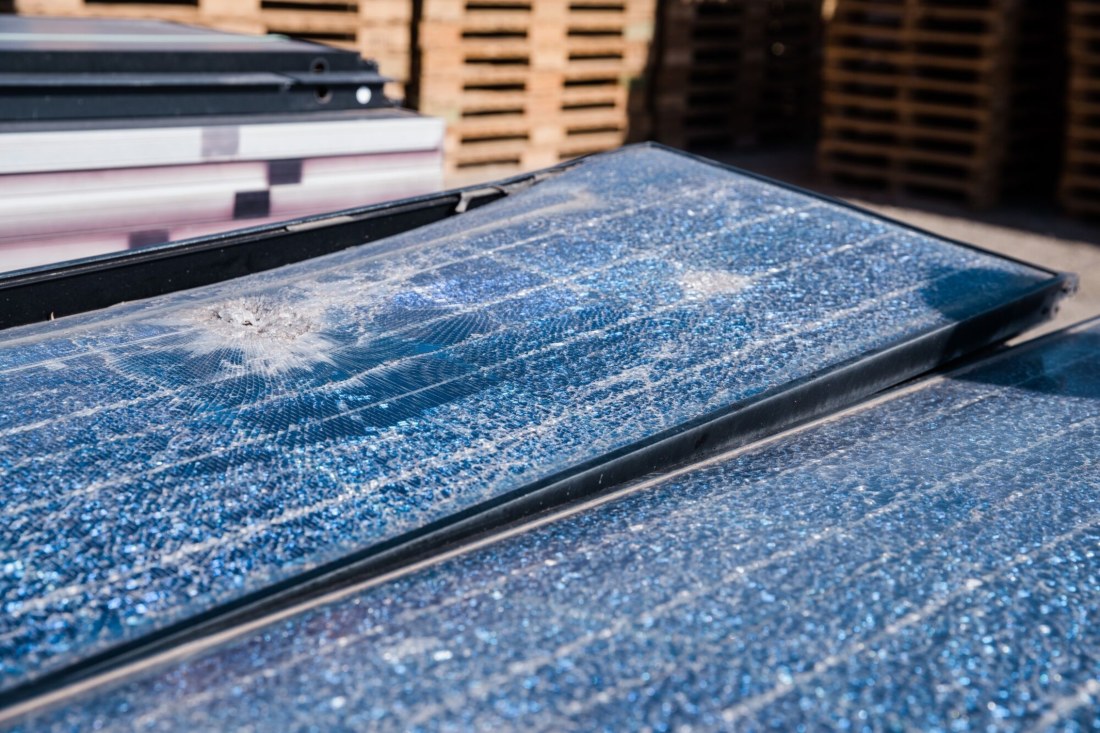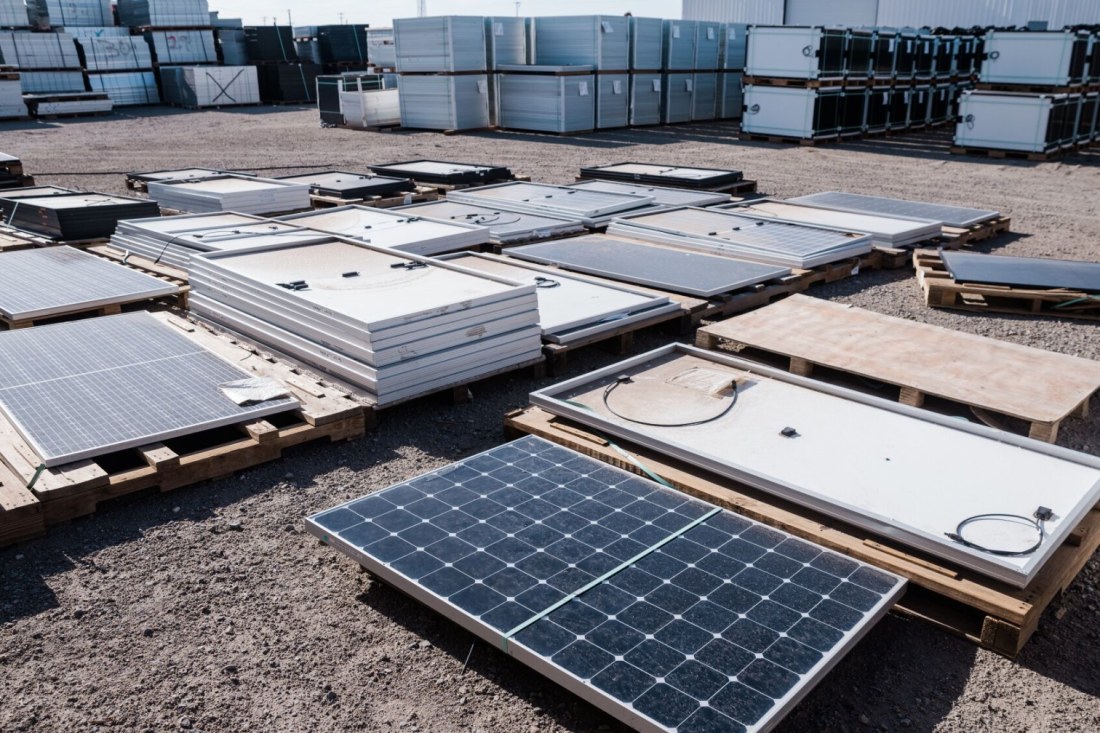Warning on the growing solar panel scrap heapThe industry is nearing a tipping point as the nation grapples with unprecedented levels of waste.
Nina HendySep 5, 2024 – 5.00am
Every week, thousands of solar panels that have reached the end of their life are removed from Australian rooftops and replaced.
But they can’t be dumped at the local tip. Even recycling centres don’t want them.It’s a major headache for solar panel companies like Omzen, which installs about 200
solar panels on homes across Melbourne a week. “Finding someone to take end-of-life panels away is a major challenge. Recycling facilities won’t let us bring solar panels in,” company owner Justin Stiles says.

Discarded solar panels with shattered glass at a recycling facility in Arizona. Australia has few options for recycling panels. Bloomberg
Omzen, which has been operating for a decade, has tried various solutions. Solar panel warranty claims often require all panels to be replaced, rather than just the one faulty panel, adding to the waste.
“Some companies say they will recycle the panels, but when you start asking questions, you realise they are just being stored in warehouses,” Stiles says.
Some larger solar panel installers refuse to remove end-of-life solar panels altogether, to avoid the headache of recycling them.
“Big companies contact us and try and get us to remove the panels so they can install new ones, but we refuse, because they’re just taking work away from us,” he says.
Sometimes, he lets good Samaritans collect end-of-life panels, which are loaded into shipping containers and shipped to Africa, where they are reused.
“They offer you $5 a panel, although we only do this sometimes,” Stiles says. “We prefer a more professional service, because it’s not ideal to leave panels sitting on our clients’ front lawn for a week.”
Though a handful of recycling centres specifically for the solar panel industry are dotted across the country, including Lotus Energy in Melbourne, Stiles says logistics can be a challenge.
The nation’s best-known solar recycling company, Reclaim PV, fell into insolvency last year, highlighting the deep issues of solar recycling.
Solar energy has enjoyed
a huge boost in recent years, as government subsidies and rebates give homeowners the impetus to make the leap. Rebates vary between states, but start around $3500 for a basic installation.
But experts warn that solar panel waste will reach crisis levels in the next two to three years amid strong demand from households seeking a more sustainable approach to energy generation. The cumulative volume of solar panels reaching the end of their life is expected to reach a million tonnes by 2035.

Most of the materials in a solar panel can be recycled, and some states and territories have banned them from landfill. Bloomberg
That could equate to as much as 100,000 tonnes of photovoltaic (PV) waste being generated every year by the end of the decade.
Research led by Dr Rong Deng, a renewable energy engineering researcher at the University of NSW, has found that if the production of solar panels continues on the same trajectory the nation will have unprecedented levels of landfill on its hands.
Her work reveals the problem is more pressing than previously thought, based on installation rates in recent years. This contradicts earlier findings that significant volumes of waste would not appear until at least after 2030.
Decommissioned rooftop solar panels will be a major contributor to the problem. Most of the materials in a solar panel can be recycled, and some states and territories have banned solar panels
from landfill.Deng’s report urges quick action to bolster recycling rates so that the panels don’t end up in landfill. Solar panels have a lifespan of about 25 years, depending on how much they are used and maintained.





